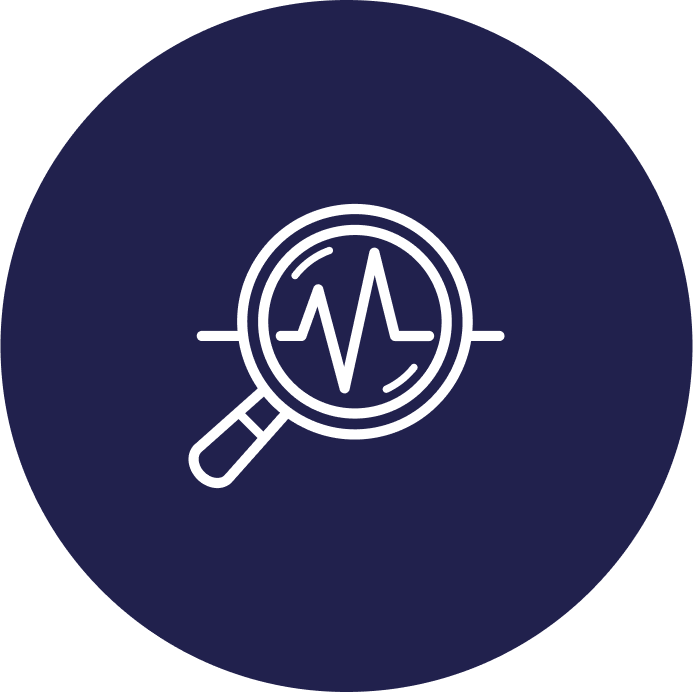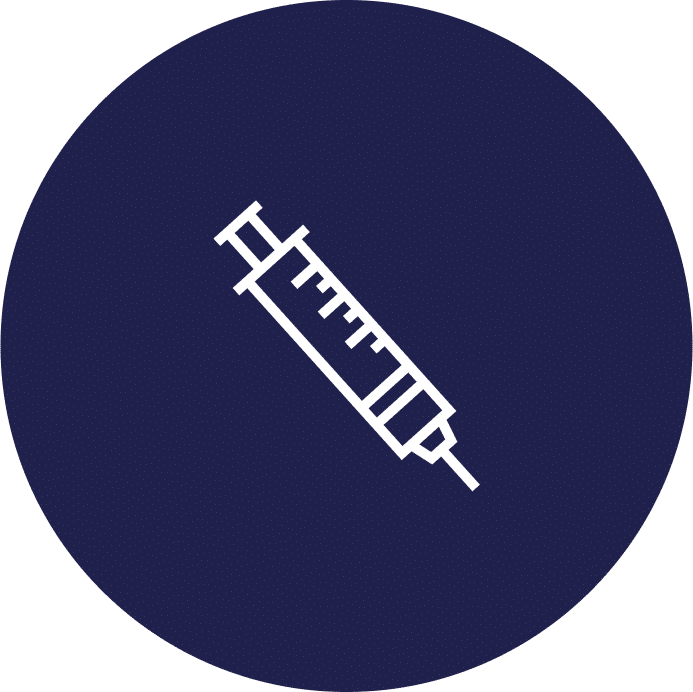Proper Diagnosis: Key to Post-Concussion Syndrome Treatment
Am I a Candidate?Post-concussion syndrome (PCS) or Persistent Concussion Symptoms is a condition that can significantly impact daily life, often persisting long after the initial head injury. Symptoms such as headaches, dizziness, and cognitive difficulties can linger, challenging even routine tasks. Proper diagnosis is essential to identify the root cause of these symptoms and guide effective treatment.
Identifying Persistent Concussion Symptoms
PCS develops after a concussion, often from sports injuries, accidents, or falls. While most people recover within a few weeks, some experience prolonged symptoms lasting months or even years.
PCS can affect anyone but is more commonly seen in individuals who have experienced multiple concussions or have underlying health conditions. Early recognition is crucial for effective management.
- Physical symptoms: PCS can manifest physically in various ways. Many individuals experience frequent headaches that range from mild to debilitating. Fatigue is another common issue, leaving patients feeling drained and unable to perform daily tasks. Nausea and balance problems can make simple movements difficult, while sleep disturbances prevent restorative rest, compounding other symptoms. Some patients report a persistent ringing in their ears (tinnitus), which can be distracting and distressing.
- Sensory symptoms: Sensory issues are also prevalent in PCS. Patients often develop a heightened sensitivity to light and sound, making it challenging to tolerate bright environments or loud noises. Blurred vision can interfere with reading or screen time, and dizziness can create a constant feeling of unsteadiness.
- Mental symptoms: Mental functioning can be significantly impaired in PCS. Memory problems may make it hard to retain new information, while concentration issues disrupt work or studies. Many describe experiencing “brain fog,” a sensation of mental cloudiness that affects decision-making and focus.
- Behavioral symptoms: Behavioral changes are another hallmark of PCS. Patients may become more irritable, finding themselves frustrated by minor inconveniences. Anxiety and depression are also common, as the lingering symptoms take a toll on mental health and emotional well-being.
How Post-Concussion Syndrome Is Typically Treated
Non-surgical treatments aim to manage symptoms and improve quality of life. These interventions include:
Physical Therapy
Targeted exercises can help restore balance, coordination, and physical strength, addressing issues like dizziness and headaches.
Chiropractic Care
Spinal adjustments and manipulations may alleviate neck pain and improve mobility, contributing to symptom relief.
Vestibular Therapy
This specialized form of physical therapy focuses on the inner ear and balance system, reducing dizziness and improving stability.
Lifestyle Changes
Rest, proper hydration, a healthy diet, and stress management are essential for recovery. Reducing screen time and exposure to bright lights can also help manage sensory symptoms.
Surgical Interventions
In cases where non-surgical treatments fail to provide relief, surgical options may be considered to address underlying structural issues. These are usually focused on the neck component of post-concussion syndrome:
- Cervical fusion surgery can stabilize the spine in individuals with severe neck instability, providing relief from chronic pain and related symptoms. The downside of this approach is that it causes adjacent segment disease of ASD, which means fusing one part of the spine is associated with overloading a normal part of the spine, which enhances wear and tear. This usually leads to the patient requiring multiple cascading fusion surgeries.
- Foramen magnum decompression (FMD), a surgical procedure that removes a small section of bone from the back of the skull and first vertebra to create more space for the brain and spinal cord, is sometimes necessary to reduce pressure on the brainstem and spinal cord, particularly in cases of Chiari malformation. This is also called Chiari Decompression Surgery. The downside of this approach is that it is usually accompanied by a fusion (see above). In addition, this surgery removes key suboccipital muscle stabilizers of the head on the neck, often leaving the head unstable and setting patients up for further problems down the road.
- Occipital nerve decompression aims to alleviate chronic headaches caused by nerve compression. Here, the surgeon dissects out the occipital nerve. The problem with this surgery can be that this dissection often damages these critical suboccipital stabilizer muscles of the head on the neck.
These surgical interventions are often reserved for cases with clear anatomical abnormalities in the neck that are contributing to PCS symptoms.
Why PCS Symptoms Can Persist Despite Treatments
Misdiagnosis is a common reason for persistent PCS symptoms. For example, neck injuries like craniocervical instability (CCI) can mimic PCS symptoms but require different interventions. Research indicates that the diagnosis of PCS can be challenging due to symptom overlap with other conditions, leading to potential misdiagnosis and delayed treatment.
Conditions like CCI can present with symptoms that mimic PCS, including headaches, neck pain, and dizziness. This similarity can lead to CCI being overlooked or misdiagnosed as PCS, delaying appropriate treatment.
Reasons Why PCS Is Hard to Diagnose
Diagnosing PCS can be challenging due to several factors:
People Going Without Medical Care
Not everyone with a concussion seeks medical attention. This lack of initial evaluation can complicate later diagnosis.
No Widely Agreed Upon Criteria
Different organizations use varying criteria for diagnosing PCS, which have evolved over time, adding to the confusion.
No Definitive Diagnostic Test
Diagnosis relies on clinical judgment, as no single test can confirm PCS. Providers evaluate symptoms and medical history to make their assessment.
Reliance on Patient-Reported Symptoms
Healthcare providers depend on patients to describe their symptoms accurately, but these descriptions can vary significantly and often lack clarity.
Some Conditions Mimic PCS Symptoms
Conditions like CCI can produce symptoms similar to PCS, making it essential to rule out other causes.
The Importance of Getting Your Upper Neck Checked
Neck injuries, such as CCI, can contribute to or worsen PCS symptoms. The complex relationship between neck trauma and brain function underscores the need for a comprehensive evaluation. Addressing neck issues can significantly improve recovery outcomes.
There Are Advanced Diagnostic Techniques Available
Just because your neck MRI was read out as “normal” or had a few disc bulges that the surgeon or other specialist said were no big deal doesn’t mean you have actually been worked up for an upper neck injury or CCI. The type of imaging required needs movement to diagnose the ligament damage seen in CCI. It’s this extra abnormal motion that these studies can identify.
Advanced imaging techniques, like digital motion X-ray (DMX) of upright seated MRI with flexion and extension views that are crucial in ruling out other potential causes of symptoms. DMX provides dynamic, real-time imaging of the neck, offering insights into conditions like CCI that static imaging might miss. Upright MRI provides a look at soft tissues as the patient looks down and bends their neck forward and when the patient looks up and bends the neck backward.
DMX is a specialized imaging tool that uses fluoroscopy to capture continuous X-ray images while the patient moves their neck. Unlike traditional static X-rays, DMX can detect subtle abnormalities, such as ligament instability, that may not appear in standard imaging.
Upright MRI is an imaging study in which the patient sits in a machine while looking out at the room. Hence, it’s a type of “open MRI” that is very different from a closed MRI, where the patient is inserted into a claustrophobia-inducing tube. In this machine, the patient can be imaged weight bearing and while looking down and up.
This makes it particularly valuable for identifying issues like CCI or other neck injuries contributing to PCS symptoms. By providing a more comprehensive view of neck function, DMX aids in pinpointing the exact cause of symptoms and tailoring effective treatment plans.
Get a Digital Motion X-ray or Upright MRI to Rule Out the Possibility of a Misdiagnosis
A DMX can help healthcare providers pinpoint the root cause of lingering symptoms, ensuring accurate diagnosis and appropriate treatment. Proper diagnosis is the key to effective recovery and restoring quality of life.
Still fighting concussion symptoms? Your upper neck could hold the answer.
Am I a Candidate?
To answer this question, fill out the candidate form below to request a new patient evaluation, and a patient advocate will reach out to you to determine your next steps. Your one-hour, in-office or telemedicine evaluation will be with one of the world’s experts in the field of Interventional Orthopedics.



